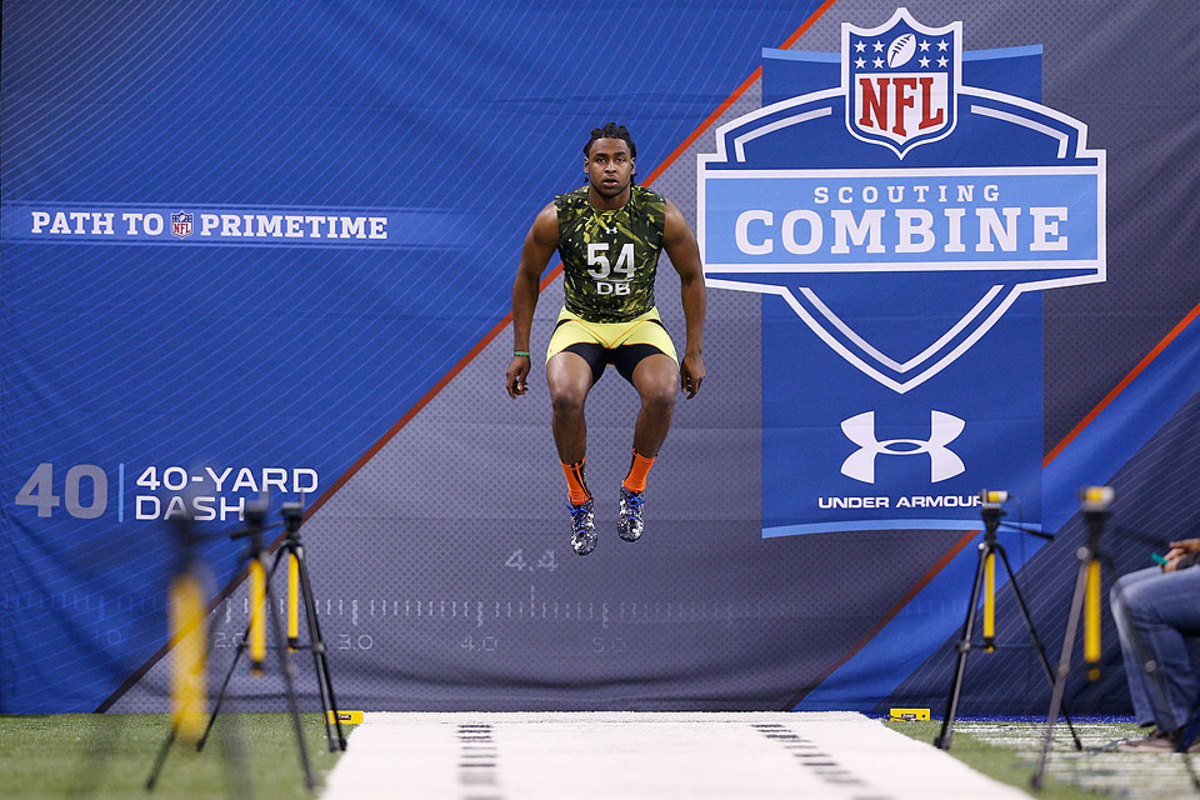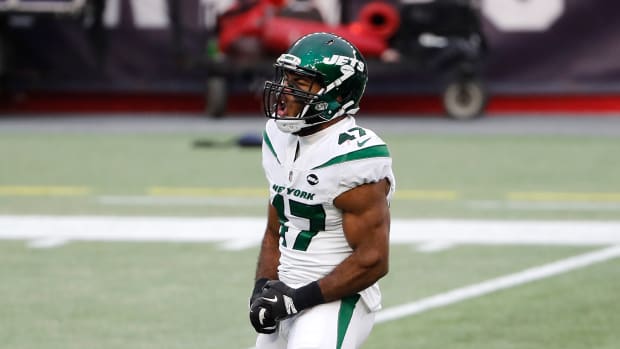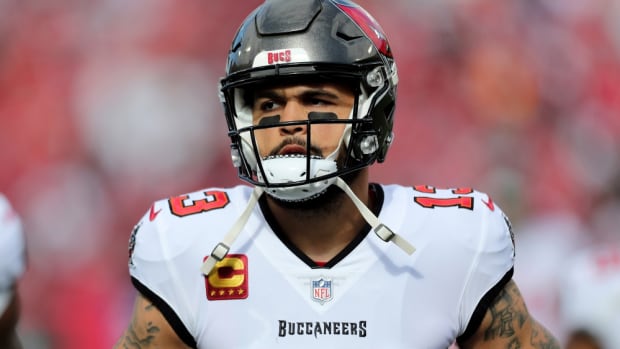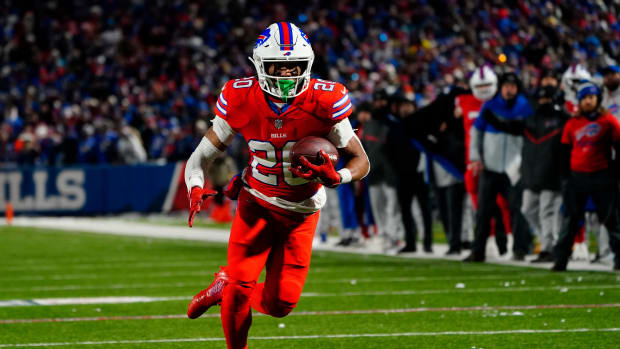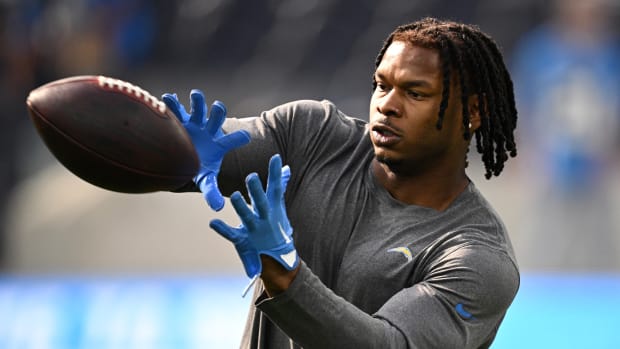Behind the Scenes, Beyond the Measurables
Editor’s note: This story, first published in February 2014, explains the mechanics of what NFL teams and prospects will go through during the combine this week in Indianapolis.
The NFL recently held its annual corporate convention at the Super Bowl, a week full of hospitality, over-the-top parties and celebration around the league’s main event (there was a game as well). This week the NFL holds its annual football convention at the scouting combine, a week of scouts, coaches and other football operations in team-issued gear populating the streets, restaurants and bars of downtown Indianapolis.
While the Super Bowl is the sizzle of league-wide events, the combine is the steak. Let’s take a look inside:
The Inspection
It is often a game of attrition for players, under persistent glare from teams. Indeed, their first obligation of the week is to literally stand in front of hundreds of NFL scouts, wearing only compression shorts, as scouts note their musculature and other elements of their frame. The “meat market”aspect of the combine is striking to the uninitiated. Players are commoditized for purchase at different price points in May.
Once dressed, players move in packs wearing shirts and sweats coded by position, such as “DL24” (Defensive Line, #24). After the weigh-in, they are on to medical stations to be poked, prodded, pulled, examined and questioned about past injuries and current recoveries. The repetitive nature of questioning is a theme for the week for the players; they must engage every team as if it is the first time hearing they’re hearing the question.
After the medicals come the measurables, the publicly recognizable part of the combine. Players have been in drill-specific training for weeks or even months, at a cost of up to tens of thousands of dollars borne by their agent.
Vernon Davis was drafted sixth overall in 2006, in large part due to his head-turning performance at Indy. (Darron Cummings/AP)
Every combine features an athletic freak or two who leaves scouts running back to their Big Board for revision. I especially remember the 2006 combine, when scouts’ collective jaws dropped at two prospects—defensive end Mario Williams and tight end Vernon Davis—for their staggering numbers. As one scout told me, those were workouts “to tell his grandchildren about.”
Regarding the debate as to whether teams rely too much (or too little) on combine statistics, my opinion is they should be thrown into the appraisal with everything else—game tape, interviews, research, scouting reports, etc.—to make as comprehensive an evaluation as possible. Simply, the results are another set of metrics to consider, fresh data for the file.
The Interviews
The evenings are reserved for team interviews, with players shuttled from team to team to answer the same questions to different faces and logos. It is part of the endurance contest for prospects, as I often saw them wondering, “Did I already tell this story to these guys or was it to another team?”
Players are well prepared for these sessions, even working with “interview coaches” such as longtime NFL personnel executive Ken Herock. The answers have become largely predictable—every player loves his mother, his coach, his teammates, his university, etc.—with little probative value. My goal was to get players off-script to see them re-focus. Here’s an example of a series of questions I would ask:
What do you do when you wake up in the morning?
“Go to class.”
What do you do before you go to class?
“Put on my clothes.”
“What do you do before you put on your clothes?”
Brush my teeth.
“What do you do before you brush your teeth?”
At this point, the player would usually say, “Huh?” before looking hopefully at the coaches to resume football questions. My point was not to be annoying (although I probably was); rather, it was to search for self-motivators. The player who does 100 pushups or sit-ups right out of bed; the player who squeezes in extra studying in the still of the early morning; the player who organizes and re-organizes his day for maximum efficiency. To me, self-motivation and self-discipline are two of the most appealing qualities in a job applicant, and I tried to ferret that out.
The Agents
2015 Draft
From combine prep and behind-the-scenes looks at intriguing prospects to our team-by-team breakdown of draft needs and prescriptions, find all of The MMQB’s 2015 coverage on our draft hub. FULL STORY
On Friday of combine week the NFLPA holds its annual agent meeting; attendance is required for continued certification. The meeting advises agents regarding salary cap specifics, grievance results and updates on NFLPA initiatives. For the most part, agents listen quietly, although there might be an outlier who uses the meeting to challenge another agent (about poaching players) or union chief DeMaurice Smith on the CBA or lack of oversight on cheating agents. Smith, like Gene Upshaw before him, maintains an uneasy co-existence with the agent community and will not hesitate to confront.
Regarding access, I remember when agents could roam (relatively) freely at the players' hotel and team areas. Agents are now forced out of designated areas, and wait patiently to take clients out to meals, give pep talks and protect their new assets from competing agents, who lay in wait.
As to getting a player invited to the combine, agents have little influence, or at least I did. In 1998, I tried in vain to secure an invitation for my client, quarterback Matt Hasselbeck. Now sixteen years later, Matthew and I have a nice laugh every year recalling the names of quarterbacks invited ahead of him that year (among them: Jonathan Quinn, John Dutton and Moses Moreno).
The Tampering
Far removed from the workouts, the real business of the combine takes place in conversations between agents and team executives, all gathered in a confined location for the only time of the year. These meetings are most often about existing players on the team, with conversations regarding: 1. Extensions (what players/agents want); 2. Reductions (what teams want); or 3. Cap renegotiations (neutral).
There is also a fourth type of meeting: the uncomfortable one where an agent requests a new or upgraded contract while the team sees no need. These seeds of dissatisfaction are often planted at the Pro Bowl, and the combine is time for “the ask.” Agents threaten—directly or indirectly—that if there is no team reaction at the bargaining table, steady drips of offseason discontent will drift from the player to the media and the locker room. Teams have different emotional and financial reactions to these complaints. (I will address this agent/player handbook, and team response, later in the offseason.)
The combine also always has been rife with brazen conversations about pending free agents. Although free agency doesn’t begin until mid-March, the combine is considered the unofficial start of the new League Year. I especially remember one year as a Packers executive being particularly frustrated, as I could not schedule a meeting with an agent for one of our pending free agents because he was overscheduled with other teams. (Yes, the player left Green Bay).
As to tampering concerns, there is always built-in cover. All well-known agents represent players on most teams, giving them an excuse for dialogue. Further, team negotiators are careful: in the rare instances I was pursuing potential free agents in Green Bay, I would phrase the question as, “In the event your guy is free next month, what would you be looking for?”
And so the business of football for the next season commences in the cold streets of Indianapolis. Let the games begin.
































